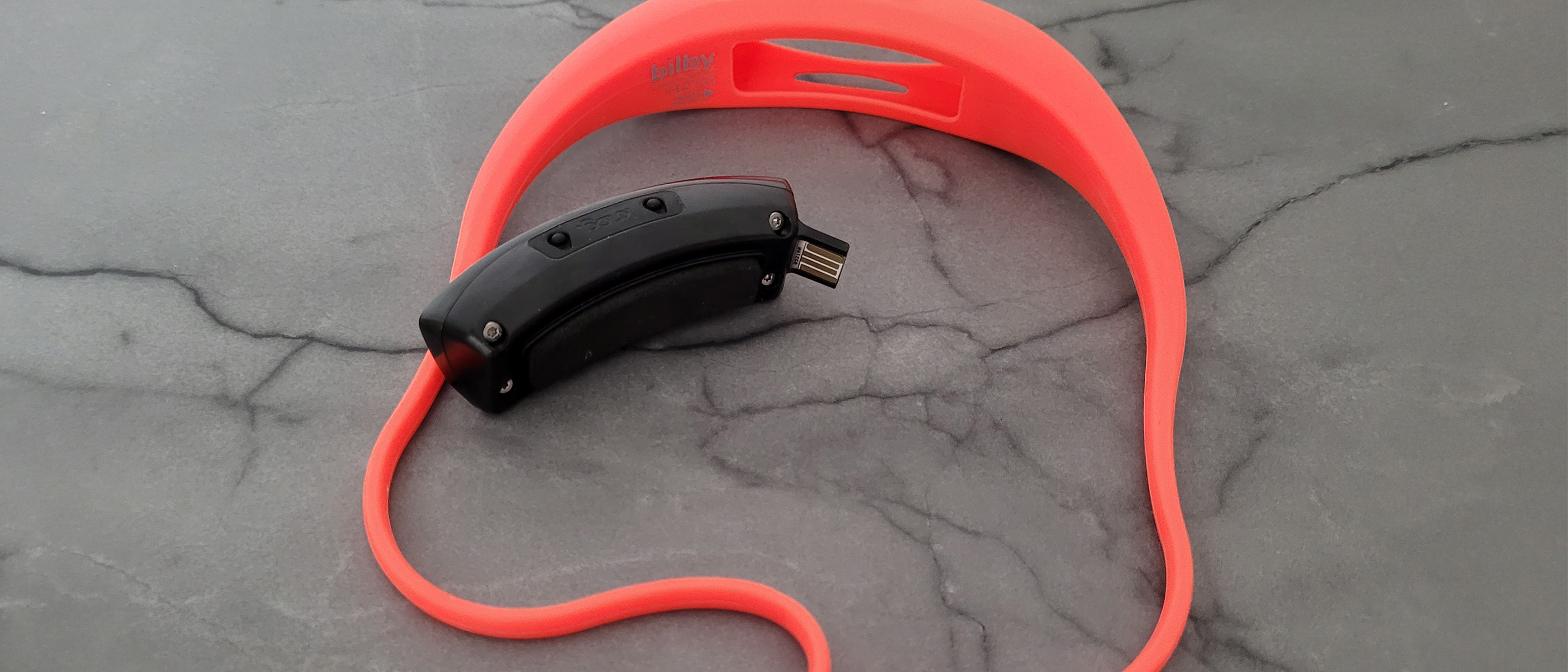Space Verdict
The Knog Bilby 400 is a powerful and functional head torch. It is comfortable, practical and uniquely styled. Once you have read the instructions (don't skip this step!), this headlamp will see you right for many years for all sorts of activities.
Pros
- +
Battery indicator is very helpful
- +
Lockable to prevent accidental use during transport
- +
Fully waterproof
- +
Customizable modes
Cons
- -
Controls take a bit of getting used to
- -
The app is PC/Mac only
- -
Lamp is not manually tiltable
Why you can trust Space.com
Knog is an award-winning Australian business founded in 2002 with a mission to get people out and about into the great outdoors and give them the best tools to make everything as simple as possible. Knog is known globally for its best-in-class bike lights, but we are interested in their headlamps, specifically the Knog Bilby 400.
The Knog Bilby 400 features in our buying guide for the best headlamps for stargazing and general low-light scenes. We selected what we think are the best headlamps available to help astronomers and astrophotographers free up their hands to allow them to make adjustments to their setups, find their equipment, and generally be able to multitask without having to worry about a handheld torch or having their all-important night vision ruined.
LED Color: White and Red
Brightness (Lumens):400 Lumens
Runtime: 105hrs at min lumens/5hrs at max lumens
Weight: 3.17oz/90g
Waterproof Rating: IP67
Battery Type : 880 mAh
The unique looks of The Knog Bilby 400 initially caught our eye, compared with what you'd imagine when you think of a traditional headlamp, and it has some excellent specs and features to boot. We wanted to try it out for ourselves.
Knog Bilby 400: Design
- Medical grade silicone, bright colors available
- Two button operation
- 5 individual LED lights
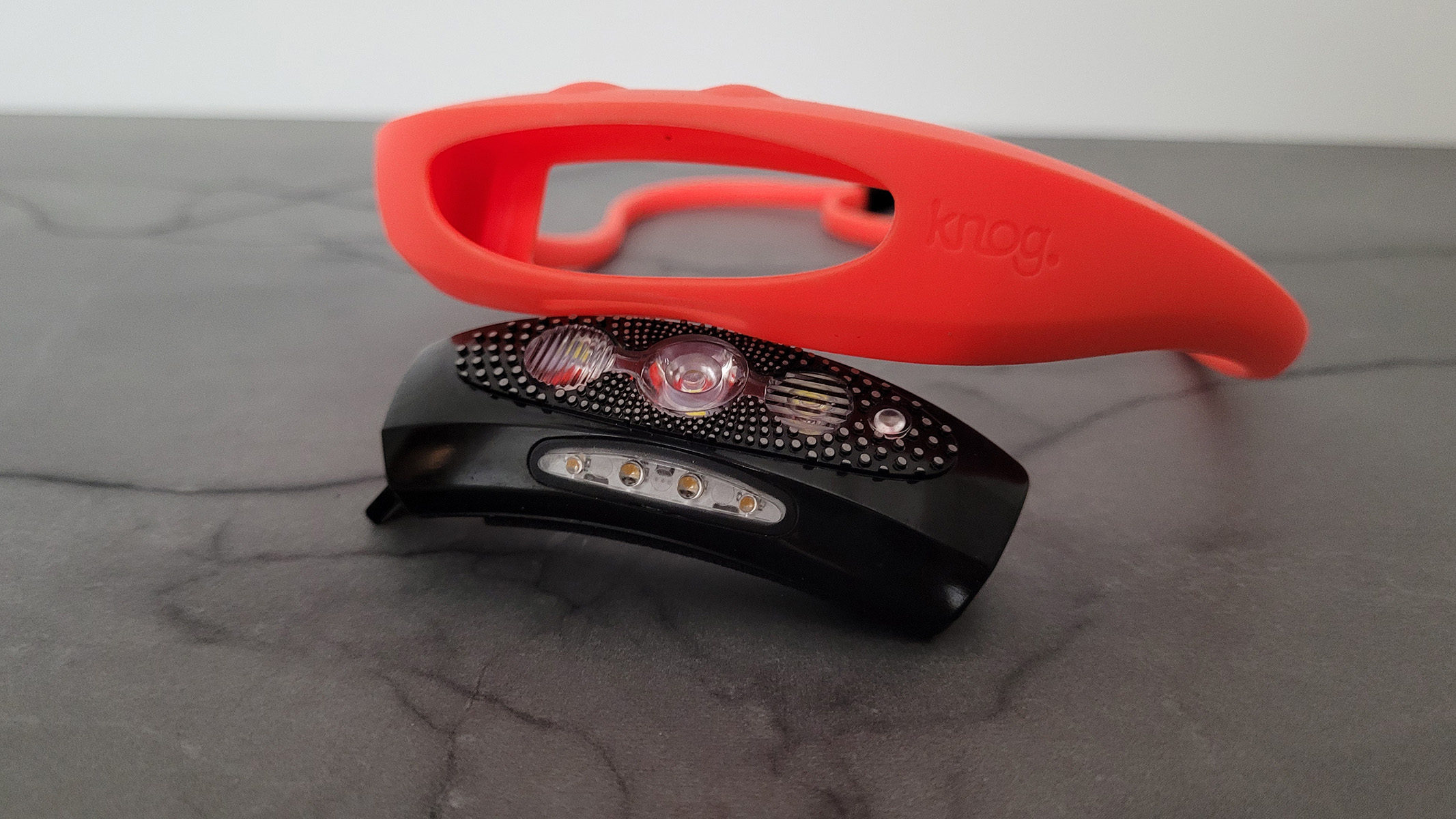
The first thing that strikes us about the Knog Bilby 400 is its unique style. It is available in four colors: putty grey, black, violet blue and fluro orange, the latter being the one we have tested in this review. We liked the bright orange, which stands out easily against predominantly black or dark-colored gear.
The headband is made from medical-grade silicone, a material that won't lose its elasticity over time. Other benefits are that the silicone won't absorb moisture from rain or sweat, keeping it fresh, and it can be wiped clean with a cloth. The silicone can also withstand temperatures up to a whopping 150 degrees, down to -60 degrees Celsius, so it can be used in extreme temperatures. It feels like you're putting swimming goggles on your head, but this doesn't leave big red marks or get tangled in your hair. The strap is easily adjustable with just one toggle, which you can adjust while it is on your head.
The lamp itself is a unit that sits inside the silicone headband. It has an aluminum heatsink to increase the heat flow away from the device and thus prevents the device from overheating when it is being used for an extended time. It has an integrated USB to plug it straight into a USB charger (or a power source such as a power bank or laptop). This is the only bit that feels a little fragile, we haven't had any problems yet, but we are extra careful when inserting and removing the unit from the headband so as not to snap the USB off.
Knog Bilby 400: Performance
- IP67 Waterproof rating
- Extremely bright
- No way of physically tilting the beam
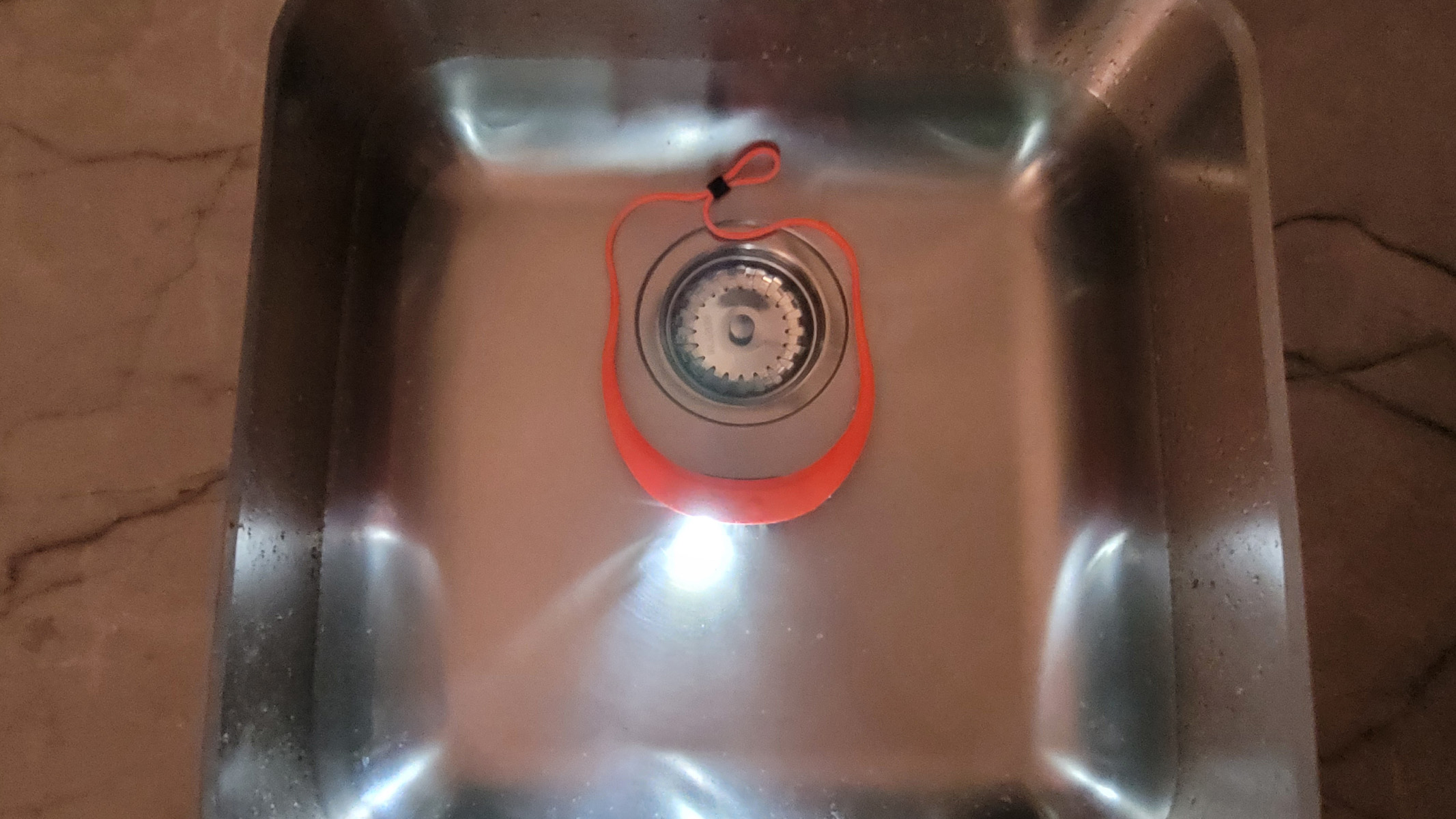
The headlamp is pre-set with five basic modes, spot, intermediate, wide beam, reading light and the red light. Make sure you read the instructions (or watch an instructional video) before heading out with the headlamp, because despite only two buttons, selecting a mode and brightness level isn't as intuitive as it would seem. We made this mistake, so on the first outing, we pressed the buttons in any combination possible to get to our desired mode or turn it off. That is our fault though, and after actually properly reading the instructions, it is pretty simple.
Cycle through the modes using the right-hand button (with the light pointing away from you), then choose a brightness level using the left-hand button. Hold down both to turn the lamp off. We did hand the Bilby to someone else to use, too and they did the same thing that we did with the buttons, especially not knowing how to turn it off. Again, after actually taking the time to learn what does what, it's easy after a few goes! To lock the lamp, press and hold down both buttons, then do the same to unlock it. This prevents the light from coming on in transit and draining the battery.
The only function we can't really get our head around is the 'tilt', to us, we prefer the traditional style of physically moving the front lamp to point the light where we want it. Although there is an electronic tilt function on the Knog Bilby 400 by long pressing either button, it doesn't seem to tilt enough to be noticeable or helpful.
Four hundred lumens are enough for most people's headlamp needs. We generally kept ours on either wide beam while walking, and red after sunset. The red light isn't bright enough to use to navigate dark areas, but for close-up work, it is excellent.
The Knog Bilby 400 has an IP67 rating, so it is dustproof and waterproof up to one meter. Ideal if you like extreme or watersports such as night-time kayaking alongside stargazing. It had no problem with being turned on and getting completely submerged in our sink for testing, with the tap running at full pressure.
Knog Bilby 400: Functionality
- Convenient charging
- Customizable lighting modes
- Lockable to avoid accidentally turning it on
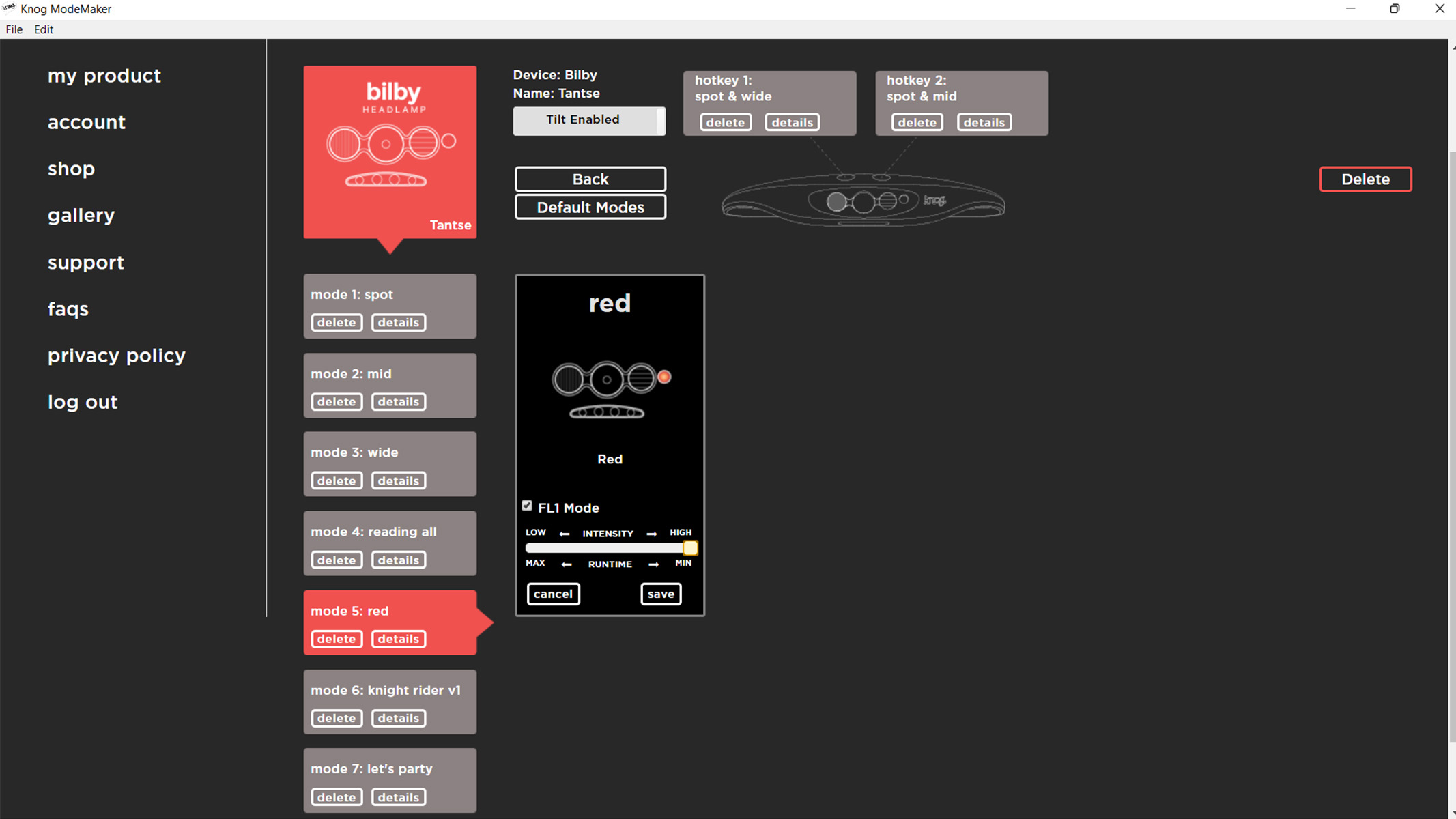
One of the most interesting things about Knog is their ModeMaker app for supported products, including the Knog Bilby 400. One of the downsides to using a multi-mode headlamp when stargazing, rather than a dedicated red headlamp, is that there is always a chance you can cycle onto a white LED by accident and instantly ruin your night vision. It can then take about 30 minutes for it to be fully restored.
The beauty of the Knog Bilby 400 is that you can turn off all of the other lights if you want to, and turn it into a dedicated red headlamp. In fact, you have the option to configure the 5-LED lights for a total of 14 different saved modes. Once you have downloaded the ModeMaker app, simply plug in your Bilby 400 to the USB port. The program will 'find' your product, allowing you to customize it to your heart's content. It is a very slick program with drag-and-drop functionality. The only downside is that it is on PC or Mac only, not on Android or Apple, but this is unavoidable given you need to be plugged into the USB slot.
When you plug it in, you automatically receive firmware updates and you can even add fun modes such as 'knight rider' and 'let's party'.
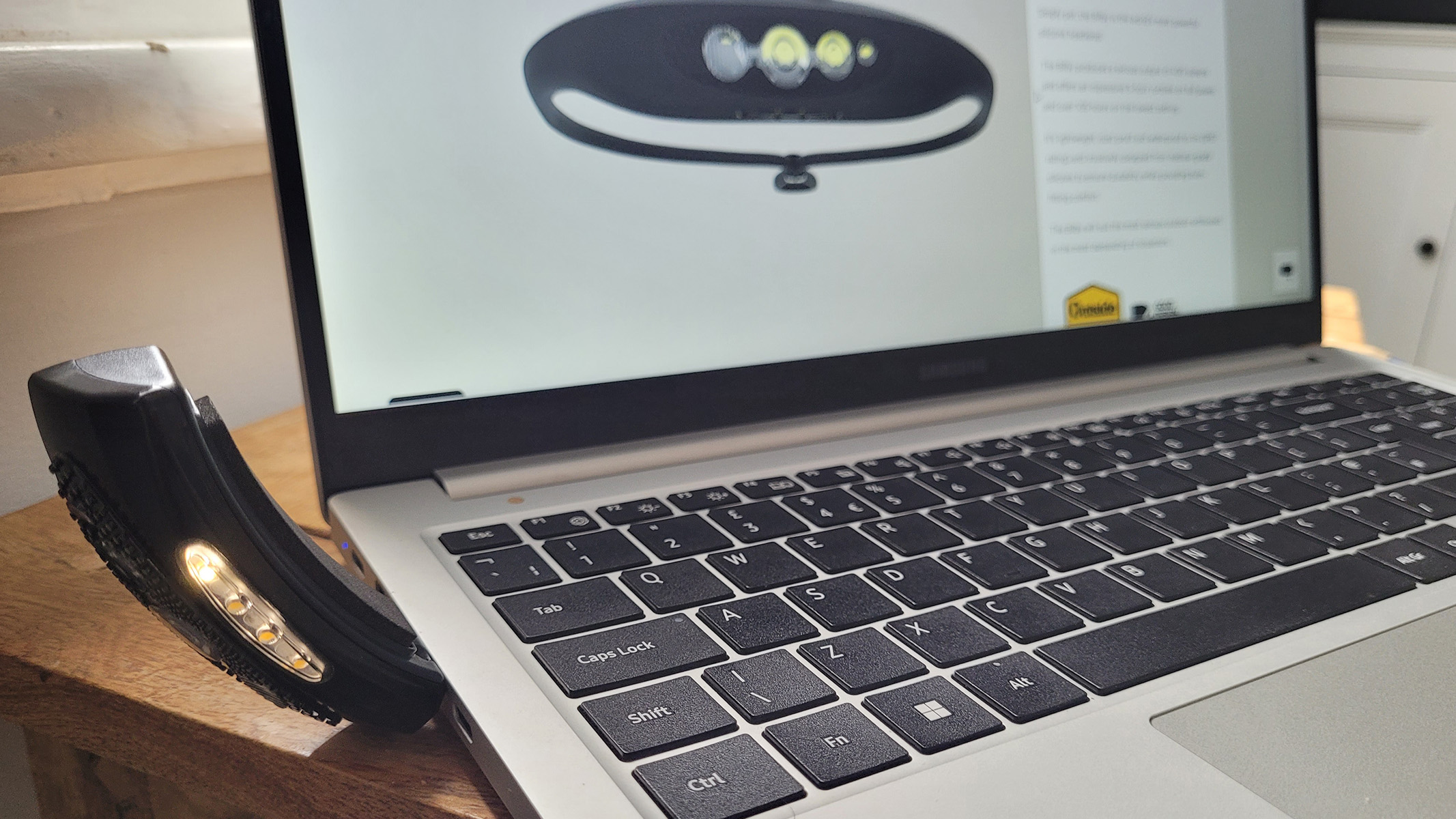
The Knog Bilby 400 takes four hours to charge from being completely flat, which is pretty reasonable, and it will last up to five hours when full. But on the most economical mode, which is the reading light, you can get more than 100 hours of light from it.
Unlike other headlamps we have reviewed so far, there is a battery indicator. When the Bilby is off, a quick press of any button will illuminate the appropriate number of LEDs in the reading light, one for 25% charge, two for 50% charge, and so on. We like this feature very much, and it means we won't ever be caught out in the dark. When the battery is low during use, it will drop the light output to increase runtime so you can get home safely without running out of power completely.
To charge the battery, remove the lamp unit from the headband and plug it directly into the USB charger, no need for extra cables which is a bonus too. The battery indicator LEDs light up one by one as the lamp charges.
Should you buy the Knog Bilby 400?
We can't think of a reason why we wouldn't recommend the Knog Bilby 400, apart from merely personal preference, and perhaps the inability to physically tilt the lamp with your hands instead of using a button. We couldn't ask for more functionality in terms of durability, lighting modes, head strap adjustments, or brightness levels, so it really comes down to whether or not you like the style.
If this product isn’t for you
A similar spec but more traditional-looking headlamp is the Petzl Actik Core, which we also gave five stars in our review. It isn't completely waterproof like the Bilby 400, and you can't create and customize the lighting modes, but in terms of a good quality headlamp that has a useful range of modes, a rechargeable battery pack (and the ability to use AAA batteries thanks to the hybrid design), you wouldn't go far wrong with that either. Check out our best headlamp buying guide to see other headlamp recommendations from us.
Join our Space Forums to keep talking space on the latest missions, night sky and more! And if you have a news tip, correction or comment, let us know at: community@space.com.

Tantse Walter is a writer, photographer and travel enthusiast that has spent over a decade facilitating global adventurous expeditions. She loves getting into the nitty-gritty of sourcing and planning itineraries, getting out and about in nature, and admiring the night sky.
